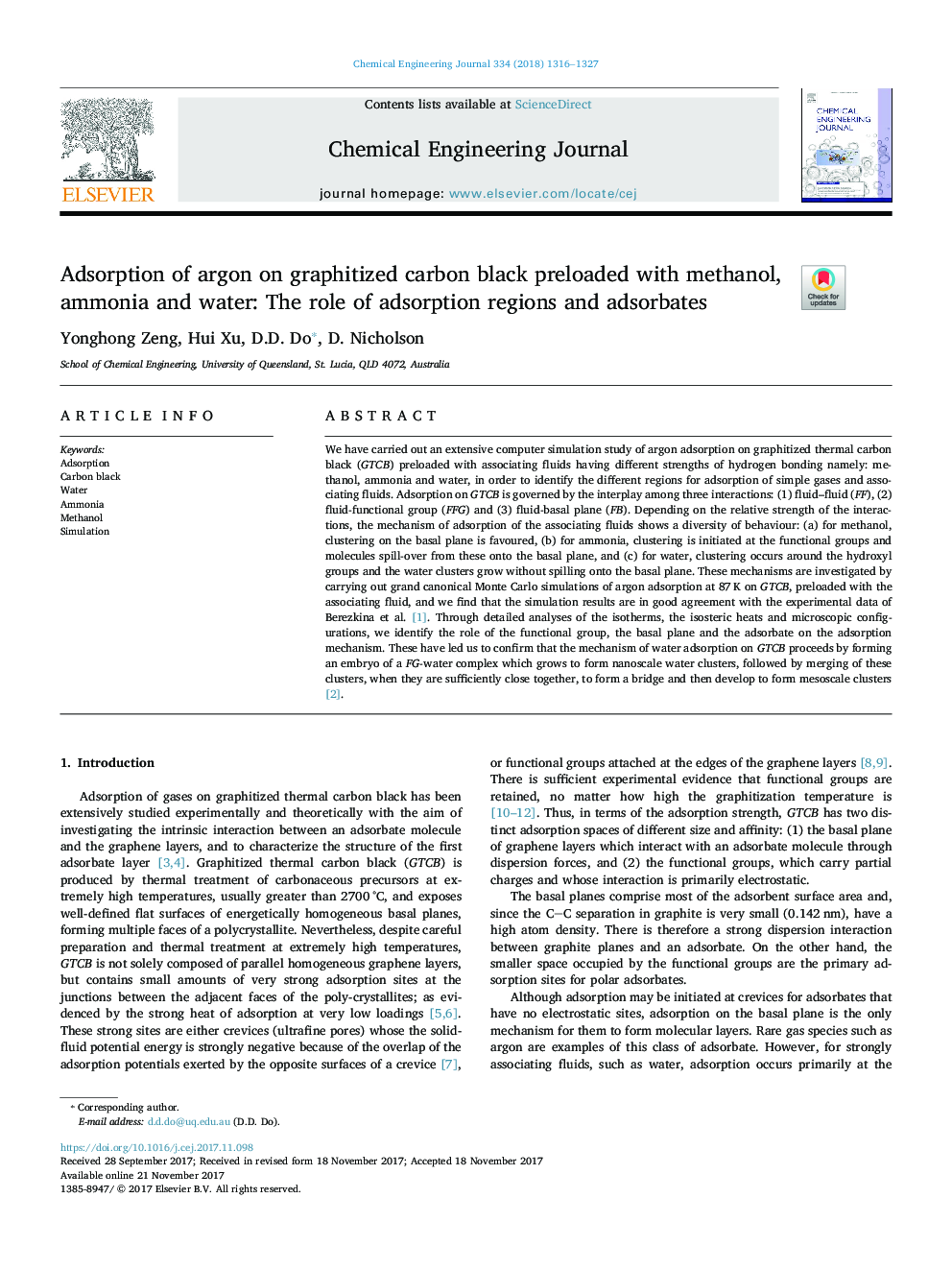| کد مقاله | کد نشریه | سال انتشار | مقاله انگلیسی | نسخه تمام متن |
|---|---|---|---|---|
| 6581109 | 1422944 | 2018 | 12 صفحه PDF | دانلود رایگان |
عنوان انگلیسی مقاله ISI
Adsorption of argon on graphitized carbon black preloaded with methanol, ammonia and water: The role of adsorption regions and adsorbates
ترجمه فارسی عنوان
جذب آرگون بر روی کربن گرافیتی که با متانول، آمونیاک و آب پر شده است: نقش مناطق جذب و جذب
دانلود مقاله + سفارش ترجمه
دانلود مقاله ISI انگلیسی
رایگان برای ایرانیان
کلمات کلیدی
جذب، کربن سیاه، اب، آمونیاک متانول، شبیه سازی،
موضوعات مرتبط
مهندسی و علوم پایه
مهندسی شیمی
مهندسی شیمی (عمومی)
چکیده انگلیسی
We have carried out an extensive computer simulation study of argon adsorption on graphitized thermal carbon black (GTCB) preloaded with associating fluids having different strengths of hydrogen bonding namely: methanol, ammonia and water, in order to identify the different regions for adsorption of simple gases and associating fluids. Adsorption on GTCB is governed by the interplay among three interactions: (1) fluid-fluid (FF), (2) fluid-functional group (FFG) and (3) fluid-basal plane (FB). Depending on the relative strength of the interactions, the mechanism of adsorption of the associating fluids shows a diversity of behaviour: (a) for methanol, clustering on the basal plane is favoured, (b) for ammonia, clustering is initiated at the functional groups and molecules spill-over from these onto the basal plane, and (c) for water, clustering occurs around the hydroxyl groups and the water clusters grow without spilling onto the basal plane. These mechanisms are investigated by carrying out grand canonical Monte Carlo simulations of argon adsorption at 87â¯K on GTCB, preloaded with the associating fluid, and we find that the simulation results are in good agreement with the experimental data of Berezkina et al. [1]. Through detailed analyses of the isotherms, the isosteric heats and microscopic configurations, we identify the role of the functional group, the basal plane and the adsorbate on the adsorption mechanism. These have led us to confirm that the mechanism of water adsorption on GTCB proceeds by forming an embryo of a FG-water complex which grows to form nanoscale water clusters, followed by merging of these clusters, when they are sufficiently close together, to form a bridge and then develop to form mesoscale clusters [2].
ناشر
Database: Elsevier - ScienceDirect (ساینس دایرکت)
Journal: Chemical Engineering Journal - Volume 334, 15 February 2018, Pages 1316-1327
Journal: Chemical Engineering Journal - Volume 334, 15 February 2018, Pages 1316-1327
نویسندگان
Yonghong Zeng, Hui Xu, D.D. Do, D. Nicholson,
